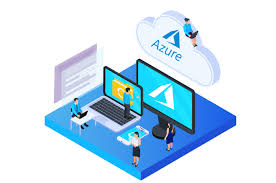In today’s remote working environment, businesses require flexible solutions that enable employees to access their applications and data securely from anywhere. Azure Remote Desktop Services (RDS) is a powerful tool offered by Microsoft Azure that helps organizations achieve this flexibility. By leveraging Azure RDS, businesses can provide remote desktop access to users, allowing them to work seamlessly from any location with an internet connection. This service is ideal for enterprises that need secure and scalable solutions for remote work, virtual desktops, and application delivery.
What Are Azure Remote Desktop Services?
Azure Remote Desktop Services allow organizations to deliver a virtualized desktop experience to users by hosting remote desktop sessions in the cloud. This service enables employees to access their desktops and applications remotely, whether they are working from home, on the go, or in any location outside the office. Azure RDS is a comprehensive solution that includes several features, such as remote desktop virtualization, application publishing, and multi-session Windows 10/11 virtual desktops, all hosted in the Azure cloud.
Azure RDS is designed to streamline IT management and improve scalability while maintaining the security and performance needed for business operations. With Azure Remote Desktop Services, businesses can centralize their infrastructure, simplify management tasks, and provide a better user experience for remote workers.
Key Features of Azure Remote Desktop Services
- Centralized Management
One of the key benefits of Azure Remote Desktop Services is the ability to centrally manage desktops and applications for remote workers. Administrators can configure, deploy, and maintain virtual desktops and applications from a single portal, reducing the time and effort required for setup and ongoing management. This centralized approach makes it easier to deploy updates, patches, and security configurations, ensuring that all devices accessing the network are consistent and secure. - Secure Remote Access
Security is a primary concern for businesses adopting remote desktop solutions. Azure RDS provides strong security features, including multi-factor authentication (MFA), encryption, and role-based access controls (RBAC). All data transmitted between the user’s device and the virtual desktop is encrypted using SSL or TLS, ensuring that sensitive information remains protected. Azure RDS also integrates with Azure Active Directory (AAD) for user authentication, allowing administrators to manage user access and permissions based on organizational requirements. - Scalability and Flexibility
As businesses grow or experience fluctuations in demand, scalability becomes a critical factor in choosing a remote desktop solution. Azure Remote Desktop Services offers unparalleled scalability, allowing organizations to add or remove virtual desktops as needed to meet changing business demands. Azure’s cloud-based infrastructure allows businesses to scale up quickly, ensuring that remote work capabilities are always available to employees, regardless of the number of users or workload requirements. - Cost Efficiency
Azure Remote Desktop Services allows businesses to reduce hardware costs by eliminating the need for physical desktop computers. Instead of maintaining expensive on-premises infrastructure, businesses can leverage Azure’s pay-as-you-go model, which allows them to only pay for the resources they use. This consumption-based pricing model helps businesses control their IT costs while still providing secure, high-performance remote desktop access to users. Additionally, Azure RDS reduces the costs associated with software licensing and management, as administrators can manage all desktop and application licenses centrally. - Enhanced User Experience
Azure RDS ensures that users have a seamless experience when working remotely. With high-speed internet connections and powerful cloud resources, Azure delivers smooth, responsive virtual desktop sessions that mimic the experience of using a local desktop. Azure’s RDS also supports multi-session Windows 10/11 virtual desktops, providing users with a rich desktop experience with all the features they need for productivity. Furthermore, Azure RDS integrates with other Microsoft services, such as Office 365, to provide users with access to essential productivity tools. - Integration with Microsoft 365 and Other Applications
Azure Remote Desktop Services is designed to work well with other Microsoft services, including Microsoft 365, SharePoint, and Teams. This integration enables employees to access the applications they need without the need for local installations. Azure RDS also supports the publishing of specific applications, allowing users to access only the applications they require rather than a full desktop environment. This makes it ideal for businesses with diverse remote work needs, as users can access specific tools or a full virtual desktop, depending on their role. - Business Continuity and Disaster Recovery
Azure’s robust backup and disaster recovery capabilities are built into Azure Remote Desktop Services, helping businesses maintain operations in the event of system failures or disasters. Azure automatically replicates data across multiple data centers, ensuring that your virtual desktops and applications are available even in the event of hardware failure or natural disasters. Additionally, businesses can configure custom recovery plans to quickly restore services and minimize downtime.
Why Azure Remote Desktop Services is Essential for Your Organization
As remote work becomes more prevalent, businesses must invest in solutions that ensure productivity, security, and efficiency. Azure Remote Desktop Services offers a comprehensive solution for remote desktop virtualization, providing employees with the ability to work from any location while ensuring data security, scalability, and performance. By using Azure RDS, businesses can centralize their IT infrastructure, reduce hardware costs, and maintain a consistent, high-quality user experience across devices.
Azure RDS also helps organizations stay agile, as businesses can quickly scale resources to accommodate changing demands. Whether your organization is a small startup or a large enterprise, Azure Remote Desktop Services offers the flexibility and scalability needed to keep your remote workforce connected and productive.
Conclusion
Azure Remote Desktop Services provides businesses with a secure, scalable, and cost-effective solution for remote desktop access. By enabling employees to access virtual desktops and applications from any device and any location, Azure RDS enhances productivity and flexibility. With strong security features, centralized management, and seamless integration with other Microsoft services, Azure RDS is an essential tool for organizations looking to support remote work, streamline IT management, and maintain business continuity in the cloud.

